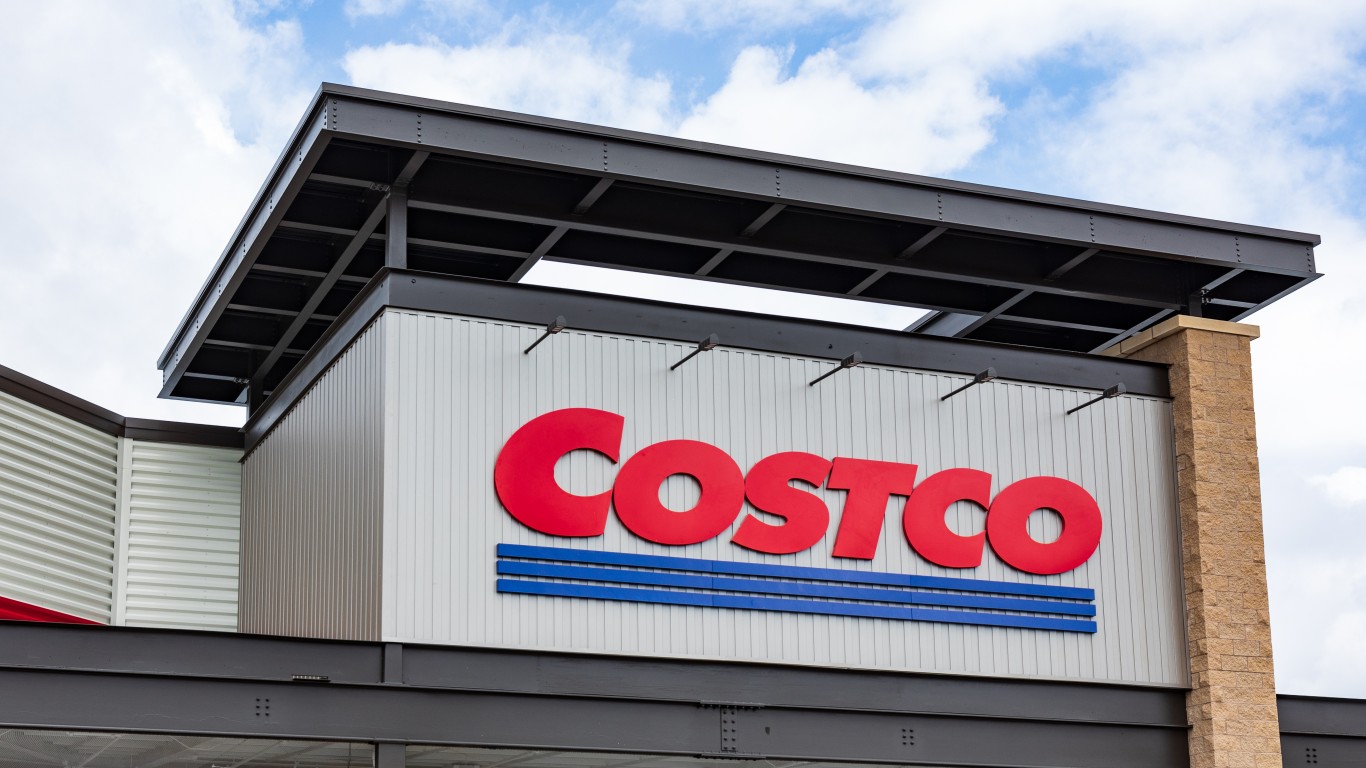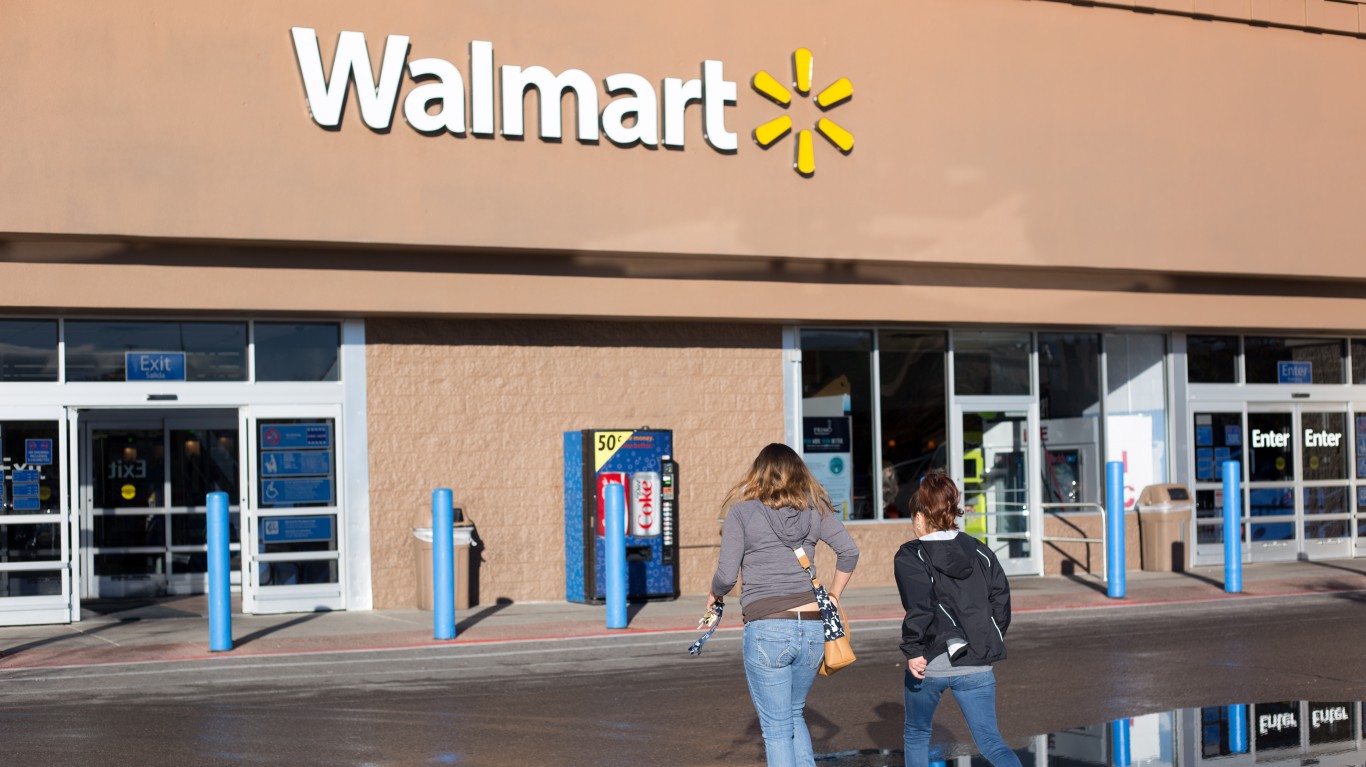 Online sales success has become critical to major retailers. All evidence shows that e-commerce continues to grow at double-digit annual rates while in-store sales in the U.S. have barely grown at all over the past two years. If retailers are to continue growing sales, they should make sure to have a successful online operation. Yet many retailers have yet to realize this. 24/7 Wall St. analyzed sales and online traffic data to determine the retailers with the weakest online business.
Online sales success has become critical to major retailers. All evidence shows that e-commerce continues to grow at double-digit annual rates while in-store sales in the U.S. have barely grown at all over the past two years. If retailers are to continue growing sales, they should make sure to have a successful online operation. Yet many retailers have yet to realize this. 24/7 Wall St. analyzed sales and online traffic data to determine the retailers with the weakest online business.
The convenience of online shopping and the ability to make price comparisons on the Internet has completely changed retail trends in the past decade. Amazon.com (NASDAQ: AMZN) and other e-commerce sites have already taken a significant lead. Amazon’s revenue in the latest quarter grew 51% to $9.9 billion. If revenue continues to increase at this rate, Amazon will become a $60 billion company next year. That is larger than Lowe’s or Best Buy, and it makes brick-and-mortar retailers shudder.
24/7 Wall St. has analyzed the effectiveness of the e-commerce operations at 25 huge, publicly traded retailers in the U.S. We looked at total revenue for 2010 based on SEC filings. We then considered each company’s web traffic for July 2011 based on data from Experian Hitwise, a research company that measures online audiences. We looked at the total traffic of each company and its share of traffic among the 25 retailers.
This list includes the worst ten retailers in terms of the ratio of annual revenue to the company’s share of Internet traffic among the retailers in July. A retailer with very large revenues but low Internet visits has done a poor job of getting more customers to shop online. Naturally, the largest online retailer, Amazon, received the best e-commerce effectiveness score of 2.1. The higher the score, the worse the performance.
Some of the results are to be expected. Pharmacies and home supply stores such as Home Depot and CVS Caremark do not do particularly well. It seems that although the companies have well-established e-commerce operations and sophisticated websites, people tend to shop for drugstore items and building materials by visiting physical locations. Still, these companies cannot ignore e-commerce, because people increasingly buy items of nearly any kind online.
The most notable result of the analysis is how poorly Walmart did, given its position as the number one retailer in the world and tremendous financial and merchandising resources. Walmart received one of the worst ranks among all the companies considered. Walmart.com is the second most visited e-commerce site on the Internet, based on Hitwise numbers. But the portion of Walmart’s sales that come from e-commerce are extremely small — less that 2%, or $6 billion, according to analysts from Wells Fargo Securities. Craig Johnson, president of Customer Growth Partners LLC, told Bloomberg, “Wal-Mart has been lagging in e-commerce, and the loss of two executives won’t help where the company’s going. It will be challenging for them to build the momentum they need.” The world’s largest retailer recently dismissed its two senior online executives.
The Ten Biggest Stores With No Online Shoppers
10. Dillard’s (NYSE: DDS)
> E-commerce effectiveness score: 17.8
> Revenue 2010: $6.3 billion
> Pct. of July Internet visits: 0.35%
Dillard’s is one of the mid-market retailers that has not been able to establish a presence distinct from companies like Kohl’s (NYSE: KSS) and Macy’s (NYSE: M). It is not large enough to be a big box-low price retailer like Walmart. It is not small enough to be a niche retailer like Abercrombie & Fitch (NYSE: ANF). The company has 308 stores, mostly located in the South, Southeast and Midwest.
9. Office Depot (NYSE: ODP)
> E-commerce effectiveness score: 27.7
> Revenue 2010: $11.6 billion
> Pct. of July Internet visits: 0.42%
Office Depot is in an extremely competitive part of the retail industry. It fights for market share against Staples (NASDAQ: SPLS), OfficeMax (NYSE: OMX) and the Sam’s Club division of Walmart. The sector is known for small margins and steep discounts. Office Depot has also been hurt by the sharp downturn in small business activity. It has 1,147 stores.
8. Lowe’s (NYSE: LOW)
> E-commerce effectiveness score: 28.3
> Revenue 2010: $48.8 billion
> Pct. of July Internet visits: 1.72%
Lowe’s is the second-largest home improvement company in the U.S. after Home Depot. Lowe’s recently launched a $5 billion share buyback initiative, a sign that its board believes its stock price is undervalued. Its recently reported earnings missed the Wall St. forecast. It also offered tepid guidance. Like all companies that rely on the housing market, Lowe’s prospects are likely to be poor for several quarters. The company has 1,725 stores.
7. Best Buy (NYSE: BBY)
> E-commerce effectiveness score: 30.8
> Revenue 2010: $50.3 billion
> Pct. of July Internet visits: 1.62%
Best Buy has been bludgeoned by investors who believe that it has lost significant sales to Amazon.com. An article in the Wall Street Journal on March 7 points out that, “Even with bankrupt Circuit City out of the picture, the retailer was losing market share, especially in the key television and computing categories.” Concerns have caused Best Buy’s stock to drop to a 52-week low of $23.25, nearly half its 52-week high.
6. Home Depot (NYSE: HD)
> E-commerce effectiveness score: 32.7
> Revenue 2010: $68.0 billion
> Pct. of July Internet visits: 2.08%
Unlike its rival Lowe’s, Home Depot posted stronger-than-expected earnings. It also raised financial guidance for the balance of fiscal 2011. Home Depot is experiencing the same headwinds as Lowe’s as the housing market continues to crumble. Home Depot’s web sales are clearly not a large portion of its business, but that is not unusual for a company that sells lumber in bulk, heavy machinery and appliances. The company does offer the ability to buy products online and have them shipped by truck. Home Depot has 2,245 store locations.
5. Staples (NASDAQ: SPLS)
> E-commerce effectiveness score: 33.2
> Revenue 2010: $24.5 billion
> Pct. of July Internet visits: 0.74%
Staples is the largest office supply retailer in the U.S. and has 2,281 store locations. Its size and number of locations give it some leverage over Office Depot and OfficeMax. Office supplies should be in a category of products that individuals are willing to buy online, but Staples has yet to convince a significant number of customers to use the Internet in place of store visits. One of the reasons could be because some of the products — like office furniture — that are expensive to ship.
4. Walmart (NYSE: WMT)
> E-commerce effectiveness score: 72.5
> Revenue 2010: $420 billion
> Pct. of July Internet visits: 5.73%
Walmart has the largest Internet traffic of any U.S. brick-and-mortar operation. It is exceeded only by online retailer Amazon.com, which had a 15.61% share of all online visits last month. Walmart is in trouble. Its international sales continue to grow in the low double digits. Sam’s Club sales still grow modestly each quarter. Walmart’s flagship U.S. operation, which represents two-thirds of the company’s revenue, has not grown for two years. Management is under tremendous pressure to reverse this trend. On the company’s last earnings call, Walmart’s top executives said they were still concerned about the strength of U.S. sales. The world’s largest retailer employs over one million people in America and two million worldwide.
3. Walgreen’s (NYSE: WAG)
> E-commerce effectiveness score: 91.3
> Revenue 2010: $67.4 billion
> Pct. of July internet visits: 0.74%
One of the assumptions behind the poor performance of Walgreen’s and other pharmacies online is that people cannot or will not buy drugs over the Internet. That is persuasive. However, most of Walgreen’s store inventory has nothing to do with drugs. People can, and do, buy toiletries, eye care, make-up and vitamins online. Walgreen’s cannot escape the fact that Amazon.com and dozens of other sites offer almost all of these items, many with free shipping. Walgreen’s has 7,650 locations.
2. Costco (NASDAQ: COST)
> E-commerce effectiveness score: 122.0
> Revenue 2010: $77.9 billion
> Pct. of July Internet visits: 0.64%
Costco has a reasonable excuse for its poor score. The purpose of a Costco membership is that it allows a customer to go to the big-box retailer and buy items in bulk. These range from appliances to tires to food. Costco’s system encourages its members to come fairly infrequently, but make significant purchases when they do. None of these things changes the fact that Costco is another brick-and-mortar retailer that sells products that are mostly available online. Whether that will hurt Costco over time is hard to predict. The retailer has 581 warehouses.
1. CVS Caremark (NYSE: CVS)
> E-commerce effectiveness store: 237.9
> Revenue 2010: $96.4 billion
> Pct. of July Internet visits: 0.41%
CVS’s score is nearly twice as bad as the next company on our list — a signal of what is likely to become a tough situation for the drugstore chain. The company has 7,182 stores and 560 retail health care clinics. CVS operates on the assumption that customers who come to its stores to buy medications buy other items as well. That is a long gamble. CVS obviously has a website, and it allows consumers to fill prescriptions and have them mailed. But that may not be in the best interest of a retailer that counts on drug-product foot traffic to sell other items. Everything CVS sells at its stores is also available online — almost all of it at Amazon.
Douglas A. McIntyre
Are You Ahead, or Behind on Retirement?
If you’re one of the over 4 Million Americans set to retire this year, you may want to pay attention. Many people have worked their whole lives preparing to retire without ever knowing the answer to the most important question: am I ahead, or behind on my goals?
Don’t make the same mistake. It’s an easy question to answer. A quick conversation with a financial advisor can help you unpack your savings, spending, and goals for your money. With Zoe Financial’s free matching tool, you can connect with trusted financial advisors in minutes.
Why wait? Click here to get started today!
Thank you for reading! Have some feedback for us?
Contact the 24/7 Wall St. editorial team.



